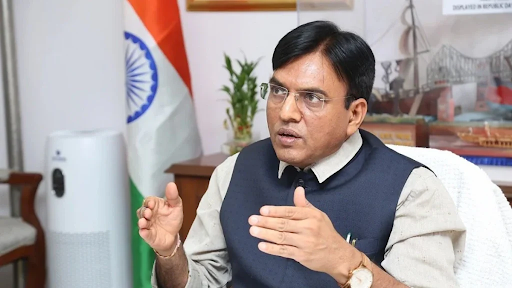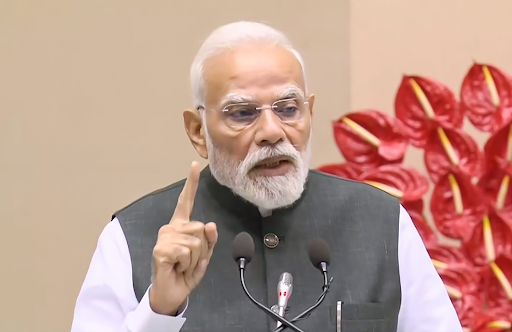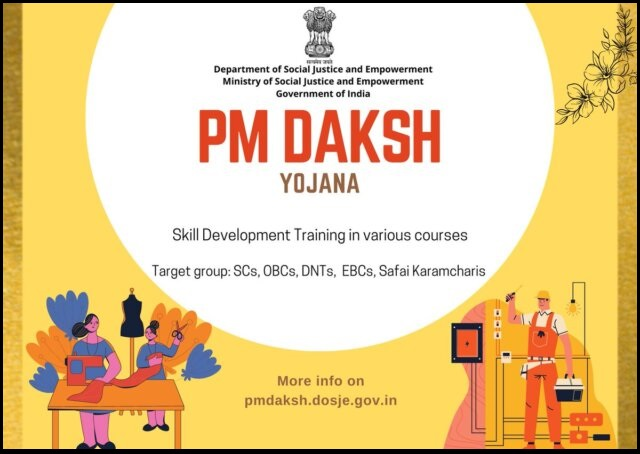



The Draft Shram Shakti Niti 2025 to empower the workforce by extending social security to unorganized and gig workers, promoting skill development, and ensuring safe workplaces. It leverages technology to build a future-ready labor force, promoting inclusive growth, and shifts from welfare-based to rights-based worker empowerment for economic progress.

Copyright infringement not intended
Picture Courtesy: NEWSONAIR
The Minister of Labour and Employment released the draft of the National Labour and Employment Policy named Shram Shakti Niti 2025 for public consultation.
It is a comprehensive National Labour and Employment Policy designed to create a fair, inclusive, and future-ready labour ecosystem.
It aims to align constitutional guarantees of worker welfare with the challenges of a fast-changing world of work, transforming labour governance from a system of inspection to one of facilitation and empowerment.
Vision: To create an inclusive, equitable, and resilient world of work where every worker—formal, informal, migrant, or gig—enjoys dignity, protection, and opportunity.
Mission: To achieve this vision through seven interlinked strategic objectives that form the core of the policy framework:
The Shram Shakti Niti 2025 rests on four foundational pillars that guide its approach to labour reform:
Institutional Framework (Three-Tier Structure)
National Level: An apex National Labour and Employment Policy Implementation Council (NLPI), chaired by the Labour Minister, will provide strategic direction.
State Level: State Labour Missions will be established to ensure the policy is adapted and implemented according to local contexts.
District Level: District Labour Resource Centres (DLRCs) will act as single-window hubs for workers. They will handle everything from worker registration and job matching to skilling and grievance redressal.
Digital Public Infrastructure (DPI) for Employment
Labour & Employment Stack: A unified digital backbone that will integrate worker identities (like e-Shram), enterprise databases, skill credentials (from Skill India), and social security entitlements (EPFO, ESIC, PM-JAY). This will ensure seamless portability of benefits for workers as they move between jobs or locations.
National Career Service (NCS) as a DPI for Employment: The policy will transform the NCS portal into a full-fledged Digital Public Infrastructure (DPI) for Employment.
Universal Social Security
Creation of a Universal Social Security Account (USSA) that integrates all major schemes like EPFO, ESIC, PM-JAY, and e-SHRAM, ensuring portability.
Occupational Safety & Health
Full implementation of the Occupational, Safety, health and Working Conditions Code 2020 (OSH Code), with a focus on risk-based inspections and gender-sensitive workplace standards.
Skill & Employment Linkages
Convergence of Skill India, National Apprenticeship Promotion Scheme (NAPS), and Pradhan Mantri Kaushal Vikas Yojana (PMKVY) into a single, seamless skill-to-employment pathway, powered by the NCS-DPI.
Women & Youth Empowerment
Setting a target to increase women's labour force participation to 35% by 2030 and expanding entrepreneurship and career guidance initiatives for youth.
Ease of Compliance
A single-window digital portal for compliance, including self-certification and simplified returns for MSMEs to encourage formalisation.
Technology & Green Transitions
Promoting the creation of green jobs, AI-enabled safety systems in high-risk industries, and "just transition" pathways for workers affected by decarbonisation.
Good Governance
Building a unified national labour data architecture to ensure transparent monitoring and coherence across different ministries and schemes.
The policy will be implemented in three phases:
To ensure accountability, progress will be tracked through a Labour & Employment Policy Evaluation Index (LPEI), which will benchmark states' performance, real-time dashboards and an Annual National Labour Report.
Universal worker registration and social-security portability.
Near-zero workplace fatalities.
Increased Female labour-force participation.
Sharp reduction in informality through digital compliance.
AI-driven labour-governance capacity in all States.
Creation of millions of green and decent jobs.
A fully converged One Nation Integrated Workforce ecosystem
Source: NEWSONAIR
|
PRACTICE QUESTION Q. While aiming for worker welfare, new labor policies must also enhance the ease of doing business. Critically analyze. 250 words |
The EPF is a mandatory retirement savings scheme for employees in organized sectors, managed by the Employees' Provident Fund Organisation (EPFO). Both employees and employers contribute 12% of the employee's basic wage and dearness allowance. The accumulated amount can be withdrawn on retirement or for specific emergencies like medical treatment or house purchase.
Launched by the Ministry of Labour and Employment, the e-Shram portal creates a centralized national database of unorganized workers. It helps the government deliver welfare scheme benefits to eligible workers, especially during emergencies like the COVID-19 pandemic.
The SAMADHAN portal is an online grievance redressal system launched by the Ministry of Labour and Employment. It allows workers, trade unions, or legal representatives to file complaints related to issues like non-payment of wages, maternity benefits, or gratuity.








© 2025 iasgyan. All right reserved